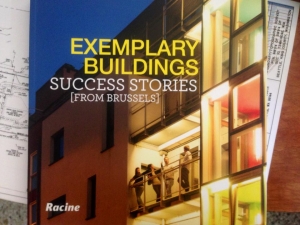 Yesterday’s Passive House Northwest Annual Conference was fantastic, led off by a rousing keynote on Seattle’s greenest building to date, the Bullitt Center, by Denis Hayes. The theme for the conference was “Building Bridges.” That means reaching out to our community of like-minded adventurers on the edges of low energy architecture–the International Living Future Institute (ILBI), the International Passive House Institute (PHI), and the Passive House Institute US (PHIUS), as well as all of their various supporting and affiliated organizations. At the core our values are the same and it’s time to set aside minor quibbles and work together.
Yesterday’s Passive House Northwest Annual Conference was fantastic, led off by a rousing keynote on Seattle’s greenest building to date, the Bullitt Center, by Denis Hayes. The theme for the conference was “Building Bridges.” That means reaching out to our community of like-minded adventurers on the edges of low energy architecture–the International Living Future Institute (ILBI), the International Passive House Institute (PHI), and the Passive House Institute US (PHIUS), as well as all of their various supporting and affiliated organizations. At the core our values are the same and it’s time to set aside minor quibbles and work together.
At the conference, 200 of us heard from Joke <“Yoka”> Dockx, of the Brussels Institute for Management of the Environment. She is responsible for the Exemplary Buildings program that over the last five years has encouraged and incentivized the creation of over three million square feet of low-energy buildings in the 62 square mile region. 53% (over 1.5 million square feet) of those buildings are Passivhaus buildings.
After the success of the program over the last five years, Brussels has resolved that as of January 1, 2015, all new public and private housing, schools and office buildings in the Brussels region will be required to be built to the Passivhaus standard.
In a nutshell (as I recall): 75% of energy use in the Brussels region is associated with buildings. (Lower transportation energy than Seattle….) Every year since 2008 they had an architectural competition for net-zero and low-energy buildings. The winners were all given technical assistance, publicity, and a financial award amounting to $12 per square foot, 90% of which went to the building owners, and 10% to the design team. The program cost was (I believe) $37 million per year. The results have been that total energy use in the region has been reduced by 10% since the start of the program. Results going forward, when the requirement for Passivhaus kicks in, will be even more dramatic.
Here is the program description for 2012 (translate with Google…).
Anywhere in Western Europe has the benefit of 20 years of Passive House experience–37,000 Passivhaus buildings, mainly in Austria and Germany. But I found Joke’s presentation charming and compelling, and I’d like to suggest that we bring her back to this area to talk to City Council and the Mayor, King County Council and Puget Sound Regional Council, to understand how Seattle and King County and other local jurisdictions might move in this direction.
